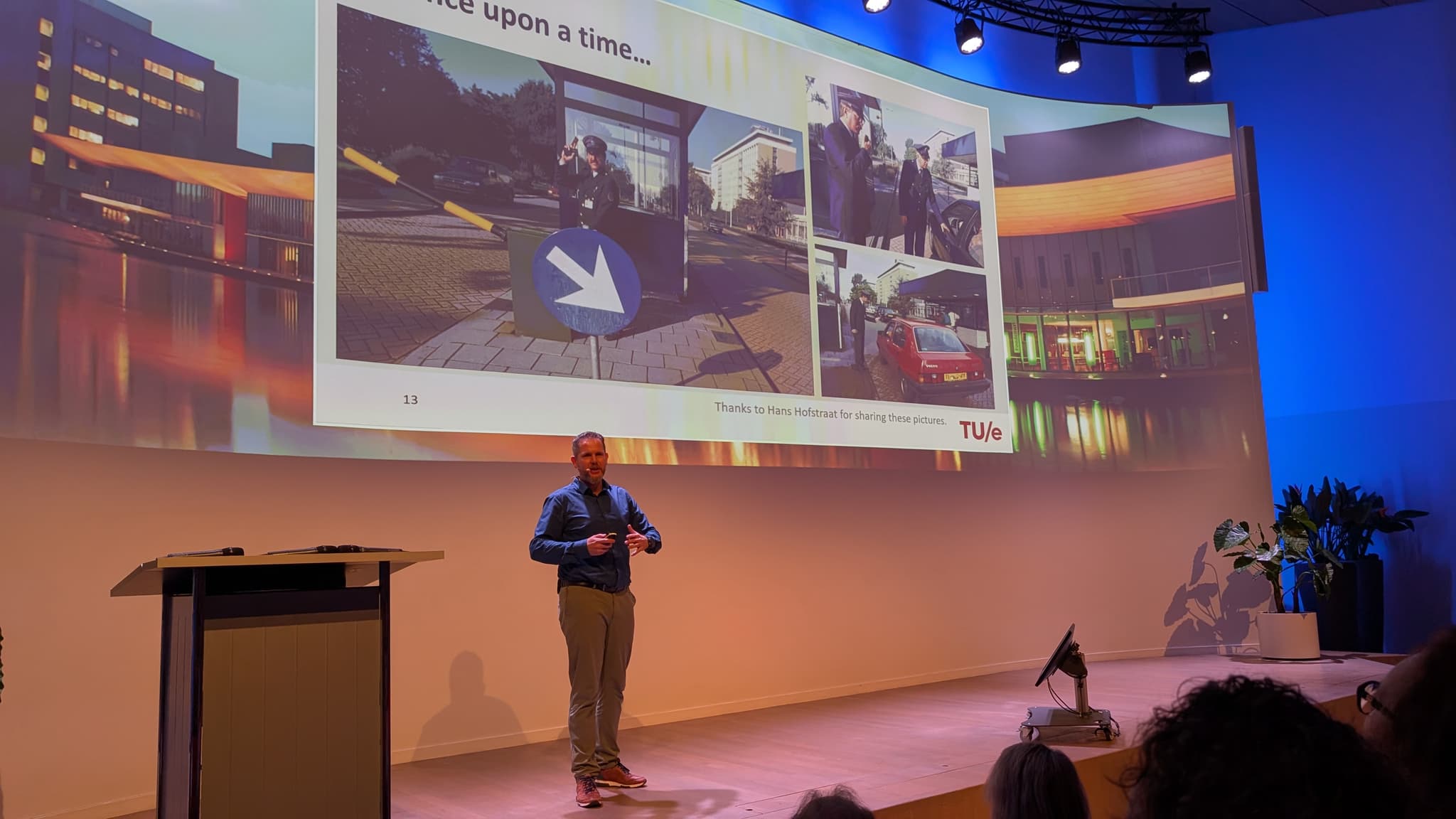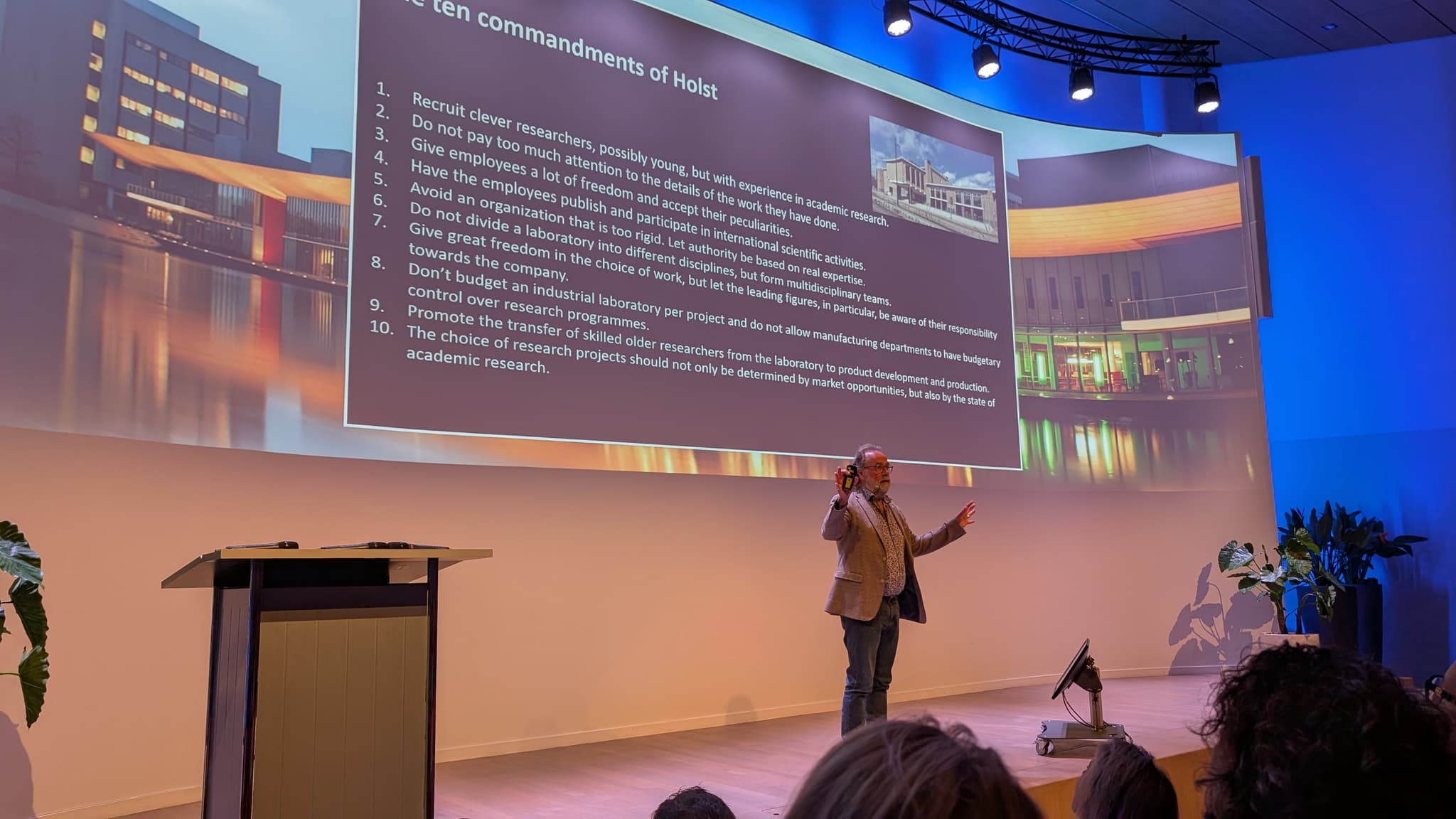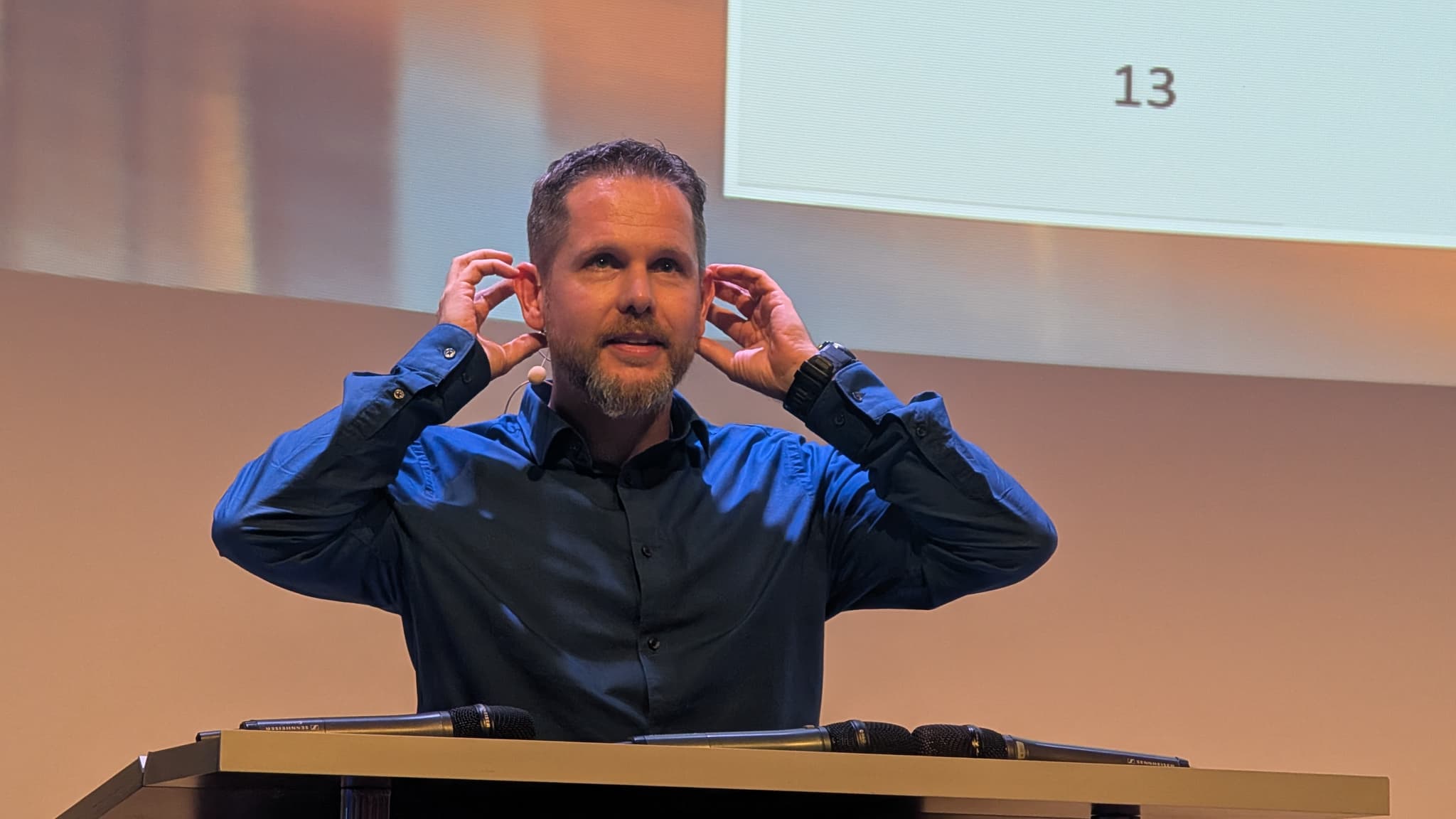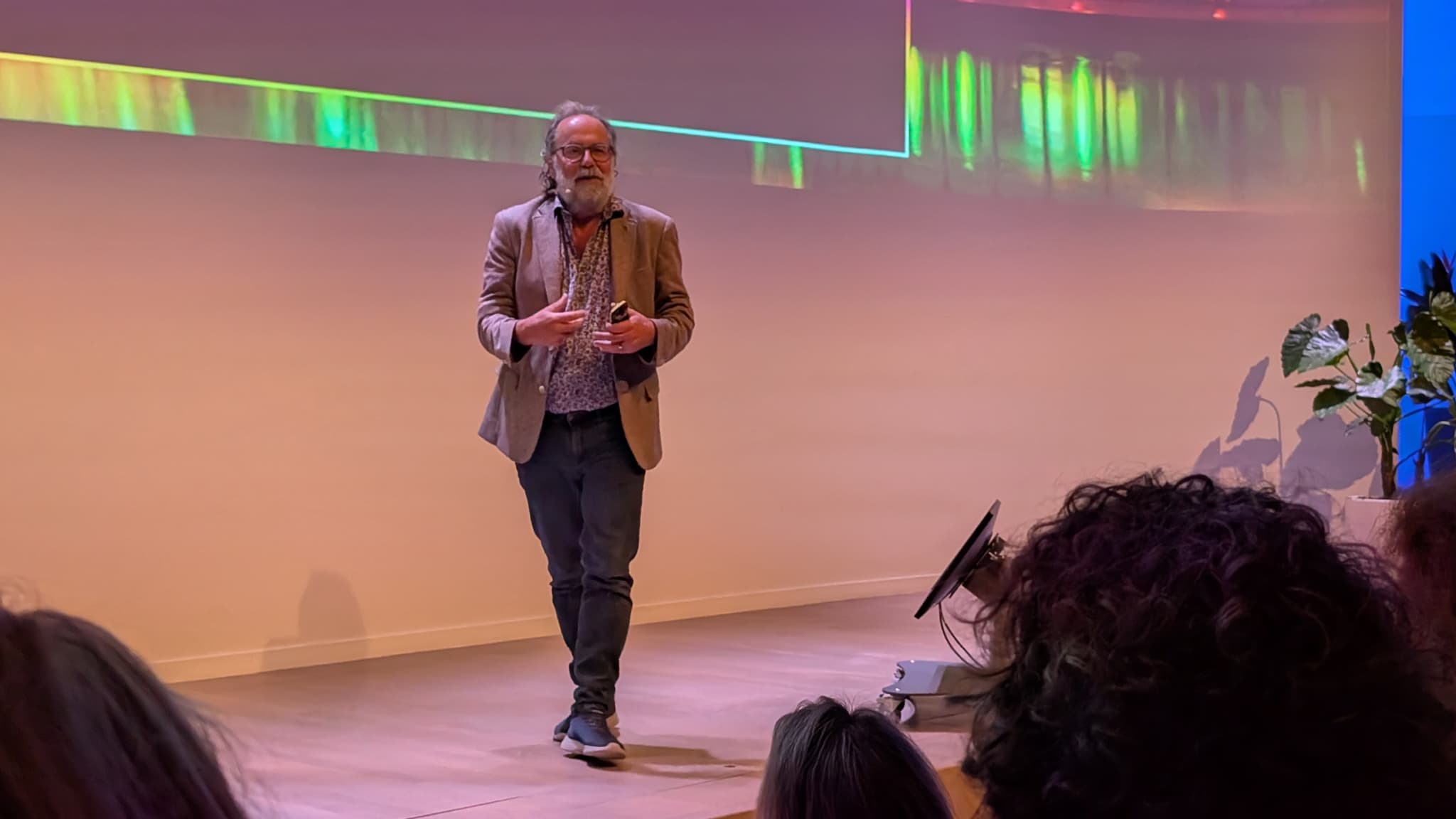“Management in academia should be disruptors”
Maarten Steinbuch and Marcel Bogers sketch the 4th-generation university: faster, more open, and relentlessly oriented to societal impact
Published on October 23, 2025

Marcel Bogers
Bart, co-founder of Media52 and Professor of Journalism oversees IO+, events, and Laio. A journalist at heart, he keeps writing as many stories as possible.
The High Tech Campus Conference Center had barely settled after the last question when Maarten Steinbuch left the audience with a provocation aimed straight at the top: “My biggest question would be towards our board and to ask them to please become disruptors. Take the guts to change and not to be safe. Management should be disruptors. I think that's where it all starts.” It was a fitting coda to a Campus² Tech Talk devoted to nothing less than reinventing the university for an era where exponential computing collides with existential challenges.
Steinbuch, Distinguished University Professor at TU/e, began by reaching back to the DNA of Eindhoven’s innovation culture: Professor Holst's “10 commandments” for research and the unique openness of the old Philips Research. “In the past, doors were open and people from optical storage spoke to people from semiconductors, spoke to healthcare,” he recalled. “It was really innovation between all the business lines of Philips, and that was unique.” With corporate research labs fading and giants like ASML, Thermo Fisher, NXP, and Signify talking less across boundaries, the region lost a vital cross-pollination engine.

Maarten Steinbuch and Holst's 10 commandments
That loss matters more than ever because the clock is speeding up. Steinbuch’s thought experiment was simple: if computational power continues to double, a child born today will enter the workforce in 2055 with a million-fold increase in available computing power. “Which problems must be solved by then?” he asked. Climate. Inequality. Water. Nitrogen. “At university, we still do research in a linear way,” he said: bachelor's, master’s, proposal, PhD, first paper after 18 months, results in 8 or 9 years. “It’s too slow.”
The 4th-generation university: outside-in and ecosystem-first
That dissatisfaction sparked his now-familiar concept of the 4th-generation university: not just education (Gen 1), not just research (Gen 2), not even “Cambridge-style” valorization and startups (Gen 3), but an outward-facing institution that enables value creation across the entire ecosystem. “We are not the ones who create value; we enable value creation,” he said. The model is unapologetically local in its accountability - “The role of a university is a local one” - yet globally excellent in knowledge.
Concretely, Steinbuch argued for structural mechanisms that collapse distance between theory and practice: challenge-based learning at TU/e’s Innovation Space; EngD programs scaled up from hundreds to the thousands to bridge industry timelines; mixed teams like the old Knowledge Workers Arrangement that once embedded 15 seasoned DAF engineers in his lab - “from one moment to another, we had 150 man-years of experience in my lab” - to deliver outcomes “much faster than in DAF alone.”
He also called universities the “long-term consciousness” of industry: companies answer to quarterly horizons; universities must guard the 30-year view.
Open innovation 2.0: orchestrating ecosystems, not just partnerships
Picking up the thread, TU/e Professor Marcel Bogers re-anchored Brainport’s story in the evolution of open innovation. Philips’ decision to open the campus two decades ago with restaurants, shared spaces, and startups wasn’t branding; it matched what scholars were describing: inside-out and outside-in flows of knowledge and IP beyond organizational walls. That funnel widened; the boundaries grew porous.

Marcel Bogers
But for Bogers, the next step is not “more open innovation”, it’s innovation ecosystems. “Open innovation 2.0 is innovation ecosystems,” he said, pointing to a shift from bilateral deals to deliberate orchestration among many stakeholders: industry, government, academia, and, crucially, society. “We often talk about the triple helix. There’s more to that,” he noted, arguing for a quadruple helix that brings citizens and sustainability explicitly into scope. The 4th-gen university, in Bogers’ definition, is “an entrepreneurial university that organizes teaching, research, and engagement around societal transformation, and positions itself as a deliberate orchestrator of a multi-stakeholder innovation ecosystem.”
Speed, diversity, and the courage to choose the “nail” first
The Q&A turned practical. How do we go faster without killing curiosity? Steinbuch drew a line: keep fundamental research alive (“the next Nobel prize could be one of them”) but rebalance. Bogers: “Engineers invent hammers and then look for the nail. I hope that at least 50% first identify the nail and then decide what hammer is needed. That’s the change in the fourth generation.”
Speed, Steinbuch argued, comes from different vehicles: EngDs for near-term engineering outcomes; industrial PhDs and hybrid appointments; reward systems that value team science and external impact alongside publications. “If a company says, ‘We’ll fund a PhD,’ I ask: could you do the work yourself if you hired someone? If yes, do it. If you pay us, you pay us to do things you did not ask for.”
On education, both speakers highlighted TU/e’s challenge-based learning pipeline, bringing real problems into the bachelor’s phase, as well as the unique magnetism of student teams. From solar family cars to electric world tours on a motorbike, these teams are Brainport’s living billboards for talent. “Our way of cooperating is unique,” Steinbuch said. “Firm debates, never political, always on content.”
Local roots, global reach
Not every ecosystem looks like Brainport. A question from Erasmus University highlighted the difficulty of translating the model to the social sciences and humanities. Bogers’ answer: join the community but adapt mechanisms to context, and build ecosystem-of-ecosystems collaborations across Dutch universities. Bogers was blunt: “Sometimes the solution is political or legal, not technical. We need Erasmus, Tilburg, Amsterdam.”
That local-global paradox - global excellence with local presence - is a design choice, not a contradiction. Orchestration is different in Copenhagen than in Eindhoven, Bogers noted, and TU/e currently researches those differences to turn the 4th-gen concept into operational practice.

Maarten Steinbuch
A call to action
How can we move from Gen 3 to Gen 4?
- Keep innovating the governance. “Don’t think we are there,” Steinbuch and Bogers warned. Treat ecosystem design itself as a continuing R&D program, ecosystem innovation.
- Scale the bridges. Expand EngD cohorts, hybrid professorships, and challenge-based learning; stand up neutral places where companies co-create with students and researchers at speed.
- Reward orchestration and impact. Align KPIs with team science, cross-boundary work, and societal outcomes.
- Choose proximity. “Nabijheid - being close together - is a key issue,” Steinbuch said. Build mechanisms that force cross-disciplinary and cross-firm collisions.
- Protect curiosity on purpose. Safeguard a meaningful share of blue-sky work; diversity of minds is the ecosystem’s shock absorber.
And then there’s leadership. The final words loop back to where we began. For Brainport to keep punching above its weight, the university and its partners must refuse the comfortable path. “Management should be disruptors,” Steinbuch urged. “Take the guts to change and not to be safe.” The 4th-generation university is not a slogan. It’s a choice to organize for speed, openness, and societal transformation. Now, before that million-fold future arrives.
